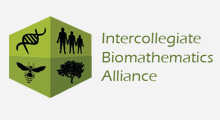Abstract
Many microhylid frog species, such as the tomato frog, Dyscophus sp., have demonstrated the ability to aim their tongues independently of head and jaw movements. However, a trade-off between tongue-aiming and head-only aiming exists in which the former allows for crypsis but lacks speed whereas the latter is faster but less accurate and more noticeable to prey. For frogs that can move their tongues independently of their heads, under what circumstances will they utilize each strategy, and why? We derive a model, dependent on factors relevant for prey-catching, for the probability the frog will turn its head (and not tongue) given the prey angle. Our model behaves as expected when altering prey-catching factors, but underestimates head turning behavior with increasing prey angle. We later allow for variance in perceived prey location to be a function of prey angle. We find such variance must generally increase with prey angle.
Recommended Citation
Tyler, Conrad; Marzen, Sarah; and Monroy, Jenna
(2022)
"Mathematically Modeling Prey-Catching Behavior of the Tomato Frog,"
Spora: A Journal of Biomathematics: Vol. 8, 1–6.
DOI: https://doi.org/10.30707/SPORA8.1.1647886301.806984
Available at:
https://ir.library.illinoisstate.edu/spora/vol8/iss1/1


